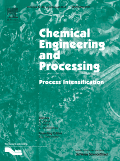
Chemical Engineering and Processing-Process Intensification
Scope & Guideline
Elevating Standards in Chemical Engineering Excellence
Introduction
Aims and Scopes
- Process Intensification Technologies:
The journal emphasizes novel and advanced methods aimed at enhancing the efficiency of chemical processes. This includes techniques such as microreactors, intensified heat exchangers, and hybrid systems that combine multiple functions to achieve better performance. - Sustainable Chemical Processes:
Research published in this journal often centers around sustainability, focusing on reducing environmental impact through greener technologies, waste valorization, and energy-efficient processes. - Advanced Separation Techniques:
The journal covers innovative separation methods, such as membrane processes, extractive distillation, and adsorption techniques that contribute to improved efficiency and reduced energy consumption in chemical separations. - Modeling and Simulation:
A strong focus on computational methods, including CFD and machine learning, is present in the journal. These techniques are applied to optimize chemical processes, understand complex phenomena, and enhance process design. - Integration of Renewable Energy:
Research exploring the integration of renewable energy sources into chemical processes is a key area of interest, including studies on biomass conversion, solar energy applications, and energy recovery systems.
Trending and Emerging
- Microfluidics and Nanotechnology:
Recent publications show a growing interest in microfluidic devices and nanotechnology applications, emphasizing their role in enhancing reaction conditions, improving mass transfer, and enabling precise control over chemical processes. - Sustainability and Circular Economy:
There is an increasing focus on sustainable practices, including waste minimization, resource recovery, and the integration of circular economy principles into chemical processes. - Machine Learning and AI Applications:
The application of machine learning and artificial intelligence for process optimization, predictive modeling, and decision-making support is emerging as a significant trend in the journal's publications. - Innovative Reactor Designs:
Research on novel reactor configurations, such as hybrid and multifunctional reactors, is on the rise, reflecting a shift towards designs that enhance efficiency and enable complex reactions. - Advanced Oxidation Processes (AOPs):
The use of AOPs for wastewater treatment and pollutant degradation is gaining traction, showcasing the journal's commitment to addressing environmental issues through innovative chemical engineering solutions.
Declining or Waning
- Traditional Batch Processes:
Research on conventional batch processing techniques has decreased, as the focus shifts toward continuous and intensified processes that offer greater efficiency and scalability. - Basic Chemical Engineering Principles:
Topics centered around foundational chemical engineering concepts, such as basic thermodynamics and fluid dynamics, are less frequently published, as the journal emphasizes advanced techniques and applications. - Single-Function Reactor Designs:
There is a noticeable decline in studies focused solely on single-function reactors, as more research is directed towards multifunctional and integrated reactor designs that enhance process performance. - Conventional Separation Methods:
Papers focusing on traditional separation methods, such as simple distillation or sedimentation, are becoming less common as the field moves toward innovative and intensified separation technologies. - Basic Environmental Impact Assessments:
Research that merely assesses environmental impacts without integrating process intensification strategies is less frequent, reflecting a trend towards comprehensive approaches that combine environmental considerations with advanced process design.
Similar Journals
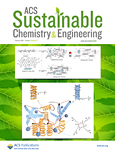
ACS Sustainable Chemistry & Engineering
Transforming chemical engineering for sustainable solutions.ACS Sustainable Chemistry & Engineering is a premier journal published by the American Chemical Society, dedicated to advancing knowledge and innovation in the fields of sustainable chemistry and engineering. With an impressive impact factor and a consistent ranking in the Q1 category across various disciplines such as Chemical Engineering, Chemistry, Environmental Chemistry, and Renewable Energy, this journal serves as a vital resource for researchers, professionals, and students alike. Since its inception in 2013, the journal has been committed to publishing high-quality, peer-reviewed articles that address the critical challenges of sustainability in chemistry and engineering. With no open-access option currently available, the journal emphasizes the importance of premium scholarly communication. As the field continues to evolve, ACS Sustainable Chemistry & Engineering remains at the forefront of providing cutting-edge research that impacts our understanding and application of sustainable practices in the chemical sciences.
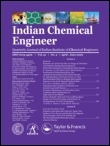
Indian Chemical Engineer
Shaping Tomorrow's Chemical Engineers Today.Indian Chemical Engineer, published by Taylor & Francis Ltd, stands as a reputable journal in the field of chemical engineering, encompassing a wide range of topics pertinent to both academia and industry. With an ISSN of 0019-4506 and an E-ISSN of 0975-007X, this journal has been a key resource for researchers and professionals since its inception in 1992, undergoing a significant evolution from 2009 to 2024. Currently ranked in the Q3 category of chemical engineering (miscellaneous) in 2023, it reflects a dedicated commitment to disseminating innovative research and insights within the discipline. The journal is indexed in Scopus, achieving a rank of 148 out of 273, which denotes its growing influence in the field with a 45th percentile placement. Although currently not an open-access publication, it offers valuable content that contributes extensively to the advancement of chemical engineering research and education. Researchers, professionals, and students alike are encouraged to engage with this publication to stay at the forefront of industry advancements and academic discussions.

CHEMICAL AND BIOCHEMICAL ENGINEERING QUARTERLY
Shaping the Future of Chemical and Biochemical EngineeringCHEMICAL AND BIOCHEMICAL ENGINEERING QUARTERLY, published by the Croatian Society of Chemical Engineering Technology, is a distinguished open-access journal that has been providing a platform for the dissemination of innovative research since its inception in 1987. With a focus on the fields of biochemistry and chemical engineering, this quarterly journal addresses a wide array of topics, including process chemistry and technology, making significant contributions to both academia and industry. Despite its current positioning in the Q4 category for biochemistry and Q3 for miscellaneous chemistry and process chemistry in 2023, the journal continues to strive for greater impact, catering to researchers, professionals, and students alike. Its open-access model, in place since 2001, ensures that cutting-edge research is accessible to a broad audience, fostering collaboration and knowledge sharing within the scientific community. By promoting high-quality research and providing insights into the latest advancements, Chemical and Biochemical Engineering Quarterly remains an essential resource for those involved in the chemical and biochemical engineering disciplines.

ChemSusChem
Leading the Charge in Chemical Engineering for SustainabilityChemSusChem is a premier interdisciplinary journal, published by WILEY-V C H VERLAG GMBH, that focuses on the critical fields of Chemical Engineering, Energy, Environmental Chemistry, and Materials Science. Since its inception in 2008, the journal has consistently maintained a Q1 ranking across multiple categories, highlighting its role as a vital resource for researchers and professionals dedicated to advancing sustainable chemical processes and technologies. With an impressive impact factor, it ranks 12th in General Chemical Engineering and is highly regarded within its scopes, indicating the journal's commitment to publishing high-quality, innovative research that addresses global challenges in energy and environmental sustainability. Though it operates on a subscription model, its contributions are essential for those in academia and industry seeking cutting-edge developments in sustainable chemistry. As it approaches its convergence span through 2024, ChemSusChem continues to shape the future of sustainable chemistry, making it a must-read for students, researchers, and practitioners alike.

Clean Technologies
Leading the Charge in Clean Technology ResearchClean Technologies, published by MDPI in Switzerland, is a pioneering open-access journal that has garnered significant recognition since its inception. Focusing on innovative solutions and practices for sustainability, it aims to serve the interdisciplinary field of clean technology while addressing pressing environmental challenges. With an impressive impact factor evidenced by its Q2 ranking in Environmental Science (miscellaneous) and Q3 in Global and Planetary Change, as well as a Scopus rank of #43 among a competitive pool of journals in these fields, Clean Technologies is positioned as a vital resource for researchers, professionals, and students alike. As a forward-thinking platform with open access since 2018, the journal emphasizes the dissemination of high-quality research, fostering collaboration and innovation in the quest for sustainable development. Located at ST ALBAN-ANLAGE 66, CH-4052 BASEL, SWITZERLAND, it also provides a comprehensive digital archive that allows for easy access to cutting-edge studies and findings relevant to global sustainability efforts.
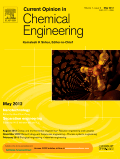
Current Opinion in Chemical Engineering
Driving excellence in chemical engineering practices.Current Opinion in Chemical Engineering, published by Elsevier Science Ltd, is a premier journal dedicated to advancing the field of chemical engineering through impactful review articles. With an impressive 2023 impact factor reflected in its Q1 ranking in the category of Energy (miscellaneous), this journal ranks #11 out of 73 in the domain, placing it in the top 15% of its field as noted in Scopus rankings. The journal encompasses critical and contemporary topics from 2011 to 2024, making it a vital resource for researchers, professionals, and students looking to stay abreast of recent developments in chemical engineering. Although it operates under a subscription model, its contributions significantly influence both academic discourse and practical applications in the energy sector. The Current Opinion in Chemical Engineering aims to foster the exchange of insights and advances, ultimately driving innovation and excellence in chemical engineering practices globally.

KOREAN JOURNAL OF CHEMICAL ENGINEERING
Elevating Knowledge in Chemical Engineering.The Korean Journal of Chemical Engineering is a prestigious publication by the Korean Institute of Chemical Engineers, dedicated to advancing the field of chemical engineering and its associated sciences. Established in 1984, this journal has made significant contributions to the dissemination of innovative research, covering a broad spectrum of topics within chemical engineering and general chemistry. With a current impact factor placing it in the Q2 quartile within both the chemical engineering and chemistry categories, it is recognized for its rigorous peer-review process and high-quality articles. The journal provides a valuable platform for researchers, professionals, and students to share their findings and collaborate on emerging methodologies and technologies. Although it does not offer open access options, its broad international readership, bolstered by its Scopus rankings — including a commendable #108 in general chemical engineering — ensures widespread visibility and dissemination of published works. As it approaches its 40th anniversary in 2024, the Korean Journal of Chemical Engineering continues to be an essential resource for anyone engaged in the field, driving innovation and academic dialogue worldwide.
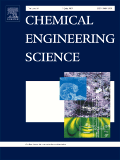
CHEMICAL ENGINEERING SCIENCE
Unveiling Insights that Shape Modern Engineering PracticesChemical Engineering Science is an esteemed journal published by Pergamon-Elsevier Science Ltd, dedicated to advancing the field of chemical engineering through high-quality research and innovation. With a storied history spanning from 1951 to 2025, this journal is recognized as a leading platform for disseminating cutting-edge studies, encompassing a diverse range of topics within chemical engineering, applied mathematics, and industrial engineering. Notably, it holds a prestigious Q1 ranking in several categories, including Chemical Engineering and Industrial and Manufacturing Engineering, indicating its significant impact and influence in these fields. The journal is not open access, yet it maintains a robust readership and is widely cited in academic circles, reflecting its vital role in shaping modern engineering practices. As a vital resource for researchers, professionals, and students alike, Chemical Engineering Science continues to bridge theoretical concepts and practical applications, fostering a deeper understanding of the complex challenges in chemical processes and manufacturing.

Asia-Pacific Journal of Chemical Engineering
Fostering Interdisciplinary Research for a Sustainable Future.The Asia-Pacific Journal of Chemical Engineering, published by WILEY, serves as a vital forum for the dissemination of innovative research in the interdisciplinary domains of chemical engineering, renewable energy, sustainability, and waste management. Established in 2006, this esteemed journal has achieved a notable impact factor that reflects its commitment to advancing knowledge and practices within the chemical engineering community. With its Q3 category rankings across various fields, including Chemical Engineering (Miscellaneous), Renewable Energy, Sustainability and the Environment, and Waste Management and Disposal, the journal holds a significant position among its peers, assuring readers of quality and relevance in published content. Although it does not offer Open Access options, the Asia-Pacific Journal of Chemical Engineering remains an essential resource for researchers, professionals, and students aiming to stay at the forefront of innovations affecting the Asia-Pacific region and beyond. The journal's broad scope covers diverse topics, making it an integral part of the academic landscape from 2006 to 2024.

THEORETICAL FOUNDATIONS OF CHEMICAL ENGINEERING
Building Bridges Between Theory and PracticeTHEORETICAL FOUNDATIONS OF CHEMICAL ENGINEERING is an esteemed academic journal published by PLEIADES PUBLISHING INC, dedicated to advancing the field of chemical engineering and chemistry through rigorous theoretical discourse and scholarly communication. With a history of publication dating back to 1974, the journal has been a vital resource for researchers and professionals, contributing to the foundation of knowledge in this multidisciplinary domain. Although it does not offer open-access options, it remains an essential platform for innovative research, boasting a 2023 ranking in the Q3 quartile for both Chemical Engineering and General Chemistry categories. The journal is indexed in Scopus, where it ranks #210 out of 273 in Chemical Engineering and #317 out of 408 in Chemistry, emphasizing its growing relevance within the scholarly community. Researchers, educators, and students alike can benefit from the insights and findings shared within its pages, making it a critical venue for those seeking to enhance their expertise in theoretical chemical engineering.